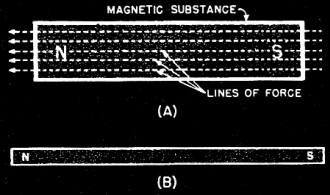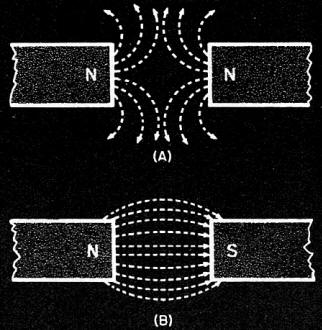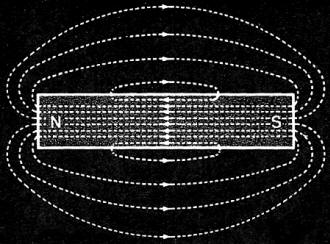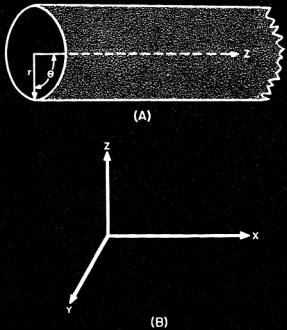|
This is the final installment of
an 11-part series in Radio News magazine entitled "Theory and Application of U.H.F.,"
written by Milton Kiver. It spanned from December 1943 to June 1945. Topics included
basic electrical, magnetic, and electromagnetic theory, cavity resonators as tuning
units of klystron and magnetron oscillators, waveguide, free space propagation,
high frequency amplifiers, transmission lines, and coupling energy to/from
cavity resonators. As the list suggests, there was a great concentration on
field theory. Being that the Radio News readership covered a broad
range of experience and education, Mr. Kiver went light on use of equations and
heavy on use of diagrams, charts, and textual descriptions. Everything described
throughout the series is as valid and applicable today as it was 75 years ago,
so it is still worth reading.
Eleven installments appeared in the following issues: Part 1: December 1943
(p35), 2: January 1944 (p32), 3: March 1944 (p41), 4: April 1944 (p46),
5: May 1944 (p50), 6: August 1944 (p53), 7:
October 1944
(p58), 8: December 1944 (56), 8: February 1945 (p58), 10: April
1945 (p57), 11: June
1945 (p57). I hope to eventually procure those editions and post the articles.
Theory and Application of U.H.F. - Part 11. The concluding article of this series,
describing the operation of electromagnetic-wave travel through wave guides or space.
By Milton S. Kiver

Fig 1 - (A) The direction of magnetic lines of force through
a magnet. (B) Showing how a long, thin magnet is generally used to approximate separate
north and south poles.

Fig. 2 - Showing the repulsion and attraction between magnetic
poles.

Fig. 3 - Magnetic lines of force are continuous and form closed
paths.

Fig. 4 - A simple arrangement which indicates the relationship
between changing magnetic fields and induced e.m.f.'s.

Fig. 5 - Two commonly used systems of coordinates: (A) rectangular:
(B) cylindrical.
All the magnetic fields discussed so far were brought about by moving electric
charges. Let us investigate the magnetic fields that are brought about by magnetic
charges or magnetic substances.
To correspond to the field of electrostatics there is magneto statics, which
deals with magnetic charges and magnetic fields at rest. As far as is known today,
there are no separate north and south poles corresponding to negative and positive
charges. Wherever a magnetic north pole is found there is likewise found a south
pole attached to it in some form or manner. Thus, if a magnet is taken and split
in two it is found to have, at one end, north magnetism and at the other end south
magnetism. However, it is possible to take a very long narrow magnet with the north
and south poles relatively far from each other and in this way approximately separate
north and south poles. (See Fig. 1.)
Analogous to the electric charge, it is also found that the north and south poles
of magnets give rise to fields of force, called magnetic fields. By means of these
fields, north poles will repel north poles and attract south poles. (See Fig. 2.)
It is also found that these lines of force, also called magnetic lines of flux,
start out from the north pole and go in through the south pole and then back to
the north pole and so on around.
A difference is noted here between lines of electric force and those connected
with magnets. If there was one electric charge in space then the lines of force
would all radiate away from the charge and would continue indefinitely. In the magnetic
case, the lines of flux must form complete rings since connected with every north
pole there is attached to it, in some manner, a south pole. Any lines emanating
from the north pole go back to the south pole and through the material to the north
from which they started. Thus, they have no end and in this sense are said to be
continuous. This is shown in Fig. 3.
Analogous to the electrostatic case, the fields and forces set up by these poles
or magnets affect only other magnetic substances and nothing else. If a magnet were
taken and placed in a field that contained stationary electrons it would be found
that each had no effect on the other. As long as these two fields are at rest, relative
to each other, there is no interaction. It is only when they move that these forces
are found to clash.
Action of Magnetic Fields
It has just been pointed out that an electric current gives rise to a magnetic
field and so it occurred to Faraday in 1831 that a magnet might, under some conditions,
give rise to an electric current. While the magnet was at rest there were no effects
noticed, but when this magnet moved relative to some piece of wire, a current was
noted on a galvanometer, which is a current-measuring device. Moving the magnet
in one direction produced a current which reversed when the magnetic field was reversed.
Currents produced this way are called induced currents and the e.m.f.'s that caused
these currents to flow are called induced e.m.f.'s. The formula by which Faraday
stated these effects is known as Faraday's law and in words states that the electromotive
force induced by changing the flux density through a fixed circuit is equal to the
time rate of change of this flux.
Faraday's results can be obtained by using the simple setup of Fig. 4. When the
magnet is moved relative to the coil, there will be an e.m.f. induced in the coil
of wire by the changing magnetic field or flux. If the wire is a good conductor,
a certain amount of current will flow. Making the wire from a poor conductor will
still give rise to the same e.m.f. but now a smaller current will flow since there
is more resistance in the circuit and we know from Ohm's law that if the e.m.f.
is constant, the current is then inversely proportional to the resistance.
Continuing in this direction, it can be seen that if finally a perfect non-conductor
is used where the conducting wire was held formerly, there would still be found
an e.m.f. induced even if no current flow resulted from it. The e.m.f. set up is
the electric field and so it can be seen that a varying magnetic field will give
rise to an electric field in a direction normal to itself. The electric field is
constant if the rate of change of the magnetic field is constant and will vary in
intensity if the rate of change of the magnetic field varies. The frequency of both
fields is the same.
It is important to remember when mentioning the time rate of change of a magnetic
field that several means may be used to bring about this change. First, of course,
the magnet producing this flux can be caused to move and this was the illustration
mentioned above. Next, the same results can be obtained by keeping the flux constant
and fixed and moving the coil of wire across this field. In this case, the induced
e.m.f. will be proportional to the number of flux lines cut per unit time, say a
second (this is related directly to the speed the coil is traveling), and the angle
at which the flux lines are cut. If the coil is moved parallel to the lines, then
no e.m.f. will be induced. If the coil moves at some angle to the field then the
induced e.m.f. will be proportional to the angle, the best results being obtained
when this angle is 90°.
The above ideas should serve to clarify the meaning of the phrase, time rate
of change of the magnetic field.
Maxwell's Equations
The above discussion has given all the formulas necessary to state the complete
set of equations that form the basis of all electromagnetic theory and which are
so often referred to as Maxwell's equations. Although it has not been stated before,
Maxwell took the laws stated above and generalized them so that they would be applicable
to any set of coordinates. Most people are familiar with the simple rectangular
coordinate system such as is obtained by having x and y axes at right angles to
each other. For three dimensions a z axis is added which is at right angles to the
above x and y axes.
However, when dealing with cylindrical pipes, it is easier to work with cylindrical
coordinates whereby points in the system are expressed in terms of the radius of
the cylinder and the angle that we must turn from the starting point. There may
be other systems that could be used but there is no necessity for discussing these
at this point. Fig. 5 illustrates the rectangular system and cylindrical system.
Maxwell took Gauss' law, Faraday's law and Ampere's law and generalized them to
fit these various three-dimensional systems.
Stated in words, instead of mathematical equations, the fundamental laws are:
1. For free space where there are assumed to be no free charges, the number of
electric lines of fiux entering any region is equal to the number of lines leaving.
2. Lines of a magnetic field form closed rings.
3. An electric field that is varying will give rise to a magnetic field. /p>
44. A magnetic field that is changing in value will develop an electric field
that is normal to both the direction of motion of the magnetic field and the field
itself.
The great significance of these equations lies in the fact that from them the
properties of electromagnetic wave travel through space can be accurately predicted.
With one clean sweep, they eliminate the need for electric currents to be actually
in the immediate vicinity in order to explain the presence of magnetic fields that
may be encountered. Electric fields that are changing in magnitude (with time) will
readily accomplish the same result.
In ultra-high-frequency work, extensive use is made of wave guides in transmitting
energy from one place to another. So long as the boundary conditions of these wave
guides are taken into account when setting up Maxwell's equations, the correct results
can be derived in advance. This not only serves to bring out the underlying equality
of all radio waves, no matter how they are generated or transmitted, but it also
provides us with a convenient means of determining in advance, whether one shape
of wave guide will prove more suitable than another. This is very important in many
of the present applications of high-frequency waves and will prove of inestimable
value in the postwar era, when greater application of u.h.f. devices will be widely
used.
It should be kept in mind that the set of equations put forth by Maxwell are,
in a sense, generalizations of or-dinary, everyday electric theory. Problems involving
transmission lines can just as readily be solved using electric and magnetic fields
as with the corresponding electric currents. The only reason this is seldom done
is due to the greater complexity involved when fields are used than for electric
currents. It might be added, too, that the general unfamiliarity with Maxwell's
equations, even today, has tended to becloud them with an unnecessary air of mystery.
Electric Wave Travel Through Space
Some idea as to the way the waves travel may now be had from Maxwell's equations
3 and 4. If the changing electric field gives rise to a magnetic field and the magnetic
field so produced gives rise to an electric field, all occurring in the same region,
then it may be wondered just how the wave will be propagated through space. But,
if, instead of the varying electric field producing the magnetic field just in the
same region, suppose it also produced a magnetic field a little removed from it
and the magnetic field so generated gave rise to another electric field, also a
little farther on, then it is possible to see something of the way the propagation
takes place. Each varying field gives rise to the other varying field a little farther
on and so each sustains the other and the wave moves along with the velocity of
light in free space. If conditions are such as to prevent the formation of one field,
then the other will likewise be prevented from existing since the energy from one
moves to the other. On the average, each field sustains half the total energy.
Another idea before Maxwell was the idea of speed. It is known that the moving
charges give rise to a magnetic field through their electric field, and that this
magnetic field can be felt at some distance from the wire. The question that he
wished to answer was whether this magnetic field was produced at some distance from
the source as soon as the charges started to move, or whether there was some time
lapse. Actual measurements gave no results since the apparatus involved could not
cope with the extremely small time interval between the start of the charge and
the appearance of the magnetic field. Maxwell showed on paper that by the use of
his electromagnetic equations, the speed of these waves should be equal to the speed
of light in free space and this is in the vicinity of 186,000 miles per second.
Maxwell never proved this by actual measurement, but Hertz did 25 years later and
his experiments led to the acceptance of Maxwell's theory. By means of further experiments
it was immediately shown that all optical laws were obeyed by these electromagnetic
waves and this, of course, led to the final conclusion that light was also an electromagnetic
wave.
It might also be stated here that the ratio of the electromagnetic unit of current
to the electrostatic unit of current is also equal to the velocity of light, and
this was another fact that got Maxwell started on the trail of his set of equations.
The medium that Maxwell envisioned the waves to travel in - free space - was called
the ether. His idea of the makeup of this nebulous substance, however, is not quite
what we think of it today, but since the laws still hold, it is best to forget,
or at least avoid, saying any-thing about the space or medium or ether that the
waves travel in and just stick to the waves themselves. This is a question that
still has not been answered to everyone's satisfaction.
This, then, is the electromagnetic theory as set forth by Maxwell, and which
is receiving so much attention at the ultra-high frequencies. The laws were based
on simple electrical phenomena and do not represent the work of one man alone. It
is doubtful that anyone person could evolve all this theory. It required the work
of many men, a fact that is true of all fields of endeavor. It is hoped that by
a better understanding of what underlies all this theory it will be possible to
more easily visualize what goes on in our high-frequency apparatus.
Author's Note - In Conclusion
This series, which is now being concluded, has attempted to present the basic
ideas of the operation of ultra-high-frequency radio apparatus in nonmathematical
language. The simple radio circuits used in ordinary, everyday equipment are still
present in ultra-high-frequency apparatus, but in a modified form that make these
components suitable for the shorter wavelengths.
Of necessity, due to present war conditions, many advancements and refinements
which have already been made in the various tubes described in these articles cannot
be told now. Later, when conditions become normal again, restrictions will probably
be lifted and the complete story will be available. For the present, best advantage
may be taken of those articles and books that do appear, so that when this later
information is released, it will fall into a familiar pattern. This is especially
urged for those persons who intend to enter the ultra-high-frequency field after
the war. A list of the available books is given at the end of this article with
an added note as to the complexity of each one.
There have been two proposals advanced recently that pertain directly to the
ultra-high frequencies. One is a proposal to allot ether space around 10,000 mc.
to servicemen and women to be used by them without the necessity of applying for
licenses, as is the custom at the lower amateur bands. The present amateur bands
were quite congested before the war and they promise to become even more so after
the war, what with the thousands of newcomers to the field of radio and radar. Sufficient
ether space could be easily found at 10,000 mc.
The second proposal relates to the use of the higher frequencies by the television
interests. The Television Panel of the Radio Technical Planning Board (RTPB) has
advanced the following proposed allocations to be used for television relay service.
1. A group. of 12-mc. channels extending from 162 to 294 mc.
2, A second group of twenty 10-mc. continuous channels to be located somewhere
between 300 and 1000 mc.
3. A group of twenty 20-mc. continuous channels to be located between 1000 and
3000 mc.
In addition to the above, experimental stations are to be given space at other
frequencies where they will be permitted to experiment with ideas in attempts to
improve the present television methods.
With television and the present radio detection devices vying for use of the
ultra-high frequencies, there promises to be plenty of work and jobs for all radiomen
who have some knowledge of the operation of radio apparatus at these extremely short
wavelengths. The old adage about a word to the wise is sufficient is even more applicable
here. In closing, the editors of Radio News wish to add that future articles on
u.h.f. radio will be presented as soon as the material becomes available.
References
V.H.F. Radio Simplified - M. S. Kiver. D. Van Nostrand Co., 1945.
This book merely assumes a simple knowledge of radio and then goes on from there
to give word descriptions of the operation of ultra-high-frequency radio.
Fundamentals of Electric Waves - Hugh H. Skilling. John Wiley & Sons.
This book describes the operations of electric waves, showing the foundations
of Maxwell's equations. While only a moderate use is made of mathematics, the examples
found require a knowledge of calculus. U.h.f. radio apparatus is not described directly,
but the travel of electric waves in wave guides. is brought out.
Hyper and Ultra-High Frequency Engineering - Sarbacher and Edser. John Wiley &
Sons.
Fields and Waves in Modern Radio - Ramo and Whinnery. John Wiley & Sons.
Ultra-High Frequency Techniques - Brainerd and others. D. Van Nostrand Co.
Electromagnetic Waves - Schelkunoff. D. Van Nostrand Co.
The last four volumes are excellent works on the subject but they all require
extensive mathematical backgrounds and would be quite out of reach of the ordinary
radioman.
Posted /p>
|














